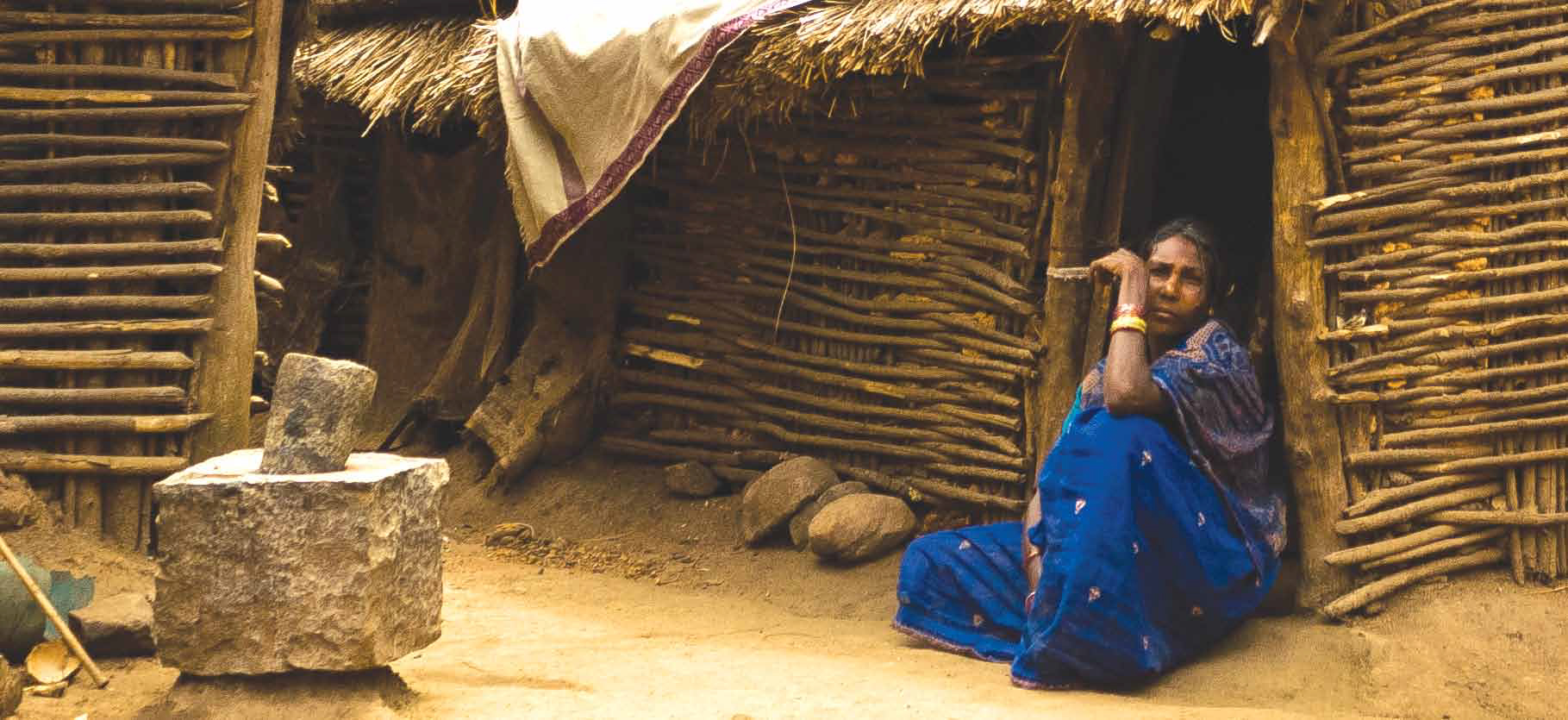FOREST-DEPENDENT PEOPLE IN THE SAME LANDSCAPE EXPERIENCE HUMAN-WILDLIFE CONFLICT IN DIFFERENT WAYS, BASED ON THEIR PRACTICES AND ATTITUDES
Altering or clearing forests for farming and other activities leads to fragmentation of wildlife habitat, which in turn results in a cascade of negative impacts. For instance, farmlands near or across an animal’s migratory route can lead to crop damage and losses to both humans and wildlife, a situation commonly known as human-wildlife conflict. The Mysore-Nilgiri corridor in southern India is both a traditional route for wildlife such as elephants and a resource base for local people, and holds considerable conservation value. While studies have investigated direct and hidden costs of conflict, we still need site-specific understanding of the issue to provide solutions. In this landscape as in others, most proposed conservation plans and forestry policy decisions tend to ignore the livelihood resources of forest dependents. Somewhat contrary to this, one paradigm of biodiversity conservation research opines that natural resource extraction by forest-dependent people is one of the most viable alternative options to reduce poverty and enhance local livelihood. Different forest communities within one landscape might differ in their practices, socioeconomic conditions and attitudes, all of which will affect the kind of conservation solutions that must be proposed for them.
Biligiri Rangaswamy Temple (BRT) Wildlife Sanctuary, recently declared a Tiger Reserve, is biologically diverse but has lost its connectivity with Nilgiri Biosphere Reserve, Western Ghats and Eastern Ghats. The landscape around BRT is completely transformed into farmlands, settlements, road networks, etc. Corridors such as DoddasampigeEdeyarahalli and ChamarajanagarTalamalai, at Punajanur and Mudalli, connecting BRT with Cauvery Wildlife Sanctuary on the east and Nilgiri Biosphere Reserve, on the south respectively, are also facing intense human presence. This leads to increase in crop raids, and human and animal loss.
The dependents
There are two major forest-dependent communities in the BRT-Sathyamangalam corridor: tribals and non-tribals. The Soligas were primarily a hunter-gatherer tribe and practiced farming through shifting cultivation for their subsistence. Following the declaration of BRT as a wildlife sanctuary in 1974 they were settled in forest lands close to the corridors. Then there are settlers from elsewhere who were allotted land for cultivation under the ‘land for food’ scheme, aimed at increasing crop production. They were allotted forest areas either close to or in the corridors.
According to recent work, around 60% of Soligas’ income was lost due to the ban on non-timber forest products collection in 2007—mainly amla, honey, lichen, soap nut, soap berry and fuel wood. However, there are still some people harvesting products for domestic use. Tribal and non-tribal communities also depend on the forest for raising cattle for ploughing as well as dairy products, whereas the goats and sheep are raised for sale as well as for meat consumption as alternative income sources.
On average, tribals hold about one acre of land per household (mainly forest land), while for non-tribals it varies from one to five acres per household with land tenure rights. Without similar rights over ‘their’ land, tribals are economically poorer than non-tribals whose landholdings are fixed assets.
Practices and damage
Traditional crops in the predominantly dry landscape include ragi (finger millet), field beans, castor and vegetables. This crop diversity has enabled a more reliable income, providing enough even if any one crop fails. In the recent past maize, turmeric, potato, sugarcane and banana are becoming major crops due to interventions for intensification and commercialisation of farming.
People have frequently seen a number of animals in the forest-farmland matrix and major crop damage, in decreasing order, is caused by elephants, wild boars, spotted deer and sambhar. Incidence of conflict is very high during ragi and maize cropping which necessitates guarding the crop over three to four months. Abstaining from guarding even for a single night during the harvest season affects a farmer’s entire effort, and puts pressure on his family because in addition to losing food security for a year, they have to search for alternative income sources. The increasing rate of farmlands being left fallow to avoid conflicts compounded with growing family sizes over the years directly affects net income levels.
Conservation attitudes
Tribals venerate the forest and its inhabitants, with the belief that their faith will earn them good harvests of both crops and forest products. Their philosophy tells them that the forest primarily belongs to wildlife. They do not consider conflict a major threat to their livelihoods compared to getting evicted from their present farmlands, which are mostly forest lands. Tribal farmers reminisce about strategies they followed in the past to reduce, not avoid, crop loss. Even today some of the settlements inside the forest cultivate coffee and other fruit trees instead of traditional crops to avoid crop damage by wildlife. In contrast to this, the non-tribal forest-fringe farming communities blame wild animals and management policies for their crop-loss.
While both groups are open to supporting any alternative strategies that could benefit forests, people and wildlife conservation, neither is ready to reduce their dependency on the forest. The tribals opined that the forest was their only source of income, and only a few of them worked in nearby coffee estates as daily wage labourers.
Because tribal lands are primarily forestlands, they are not allowed to use electric or solar fencing for their farms, and are also not eligible for compensation when wild animals raid their crops. The human-wildlife conflict is therefore a bigger problem for tribal farmers than non-tribals in the study area.
Both forest-dependent communities expressed their views regarding conservation strategies towards managing the forest resources and mitigating human-wildlife conflict.
Some of their suggestions and demands are listed below:
- Solar fencing is not affordable to all farmers.So, it would be better to share a ‘community-level solar fencing system’ for the forest as well as revenue land to be effectively maintained by a beneficiary member regularly.
- Crop insurance for crop loss/damage with the support of conservation agencies will be a good strategy to avoid exploitation by insurance companies.
- The existing compensation schemes and bureaucratic processes fail to generate support for conservation in the study area and it should be revised including inputs and requirements of the farmers.
- The state forest department must reconstruct the defunct elephantproof trenches in this area with revised measurement of width and depth as per the villagers’ needs and inputs.
- Formation of an ‘anti-depredation squad’ that would include both local residents and skilled forest personnel to prevent wildlife conflict and chase problematic animals during cropping seasons. This will also help bridge a good relationship between people and forest managers.
- Along with existing eco-development committees in many forest areas, special ‘Joint Corridor Management Committees’ can be formed exclusively to address the issues of wildlife corridor conservation for safe migration of wild animals.
The tribal and non-tribal communities have shown great cooperation and even provided inputs for conflict mitigation measures, aimed at achieving sustainable conservation and utilisation of the corridors. It is necessary to develop alternatives in order to reduce pressure on the forests, based on the local communities’ needs, mainly focusing on crop protection, participative management and crop insurance. These are affordable and reasonable strategies to help restore the habitat as well as livelihoods of forest-dependent communities.
M Paramesha is a PhD Student at the Ashoka Trust for Research in Ecology and the Environment (ATREE), India. paramesh@atree.org
Photograph: www.shreniksadalgi.com






